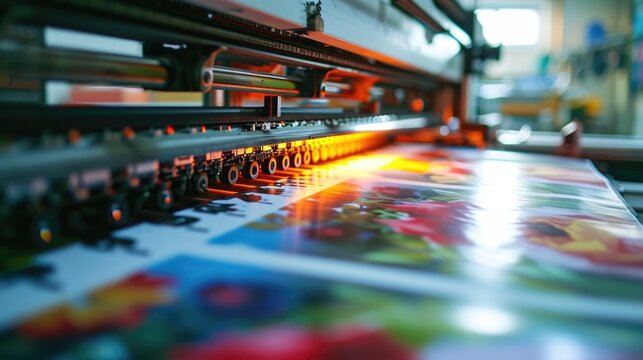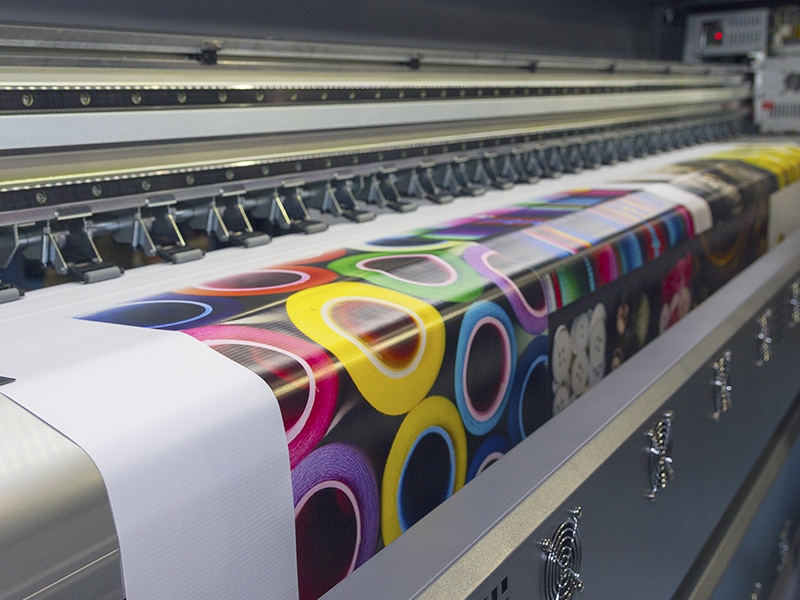In the world of textile production, offset printing for textile applications has emerged as a significant method, offering numerous advantages and versatile techniques. This printing process, renowned for its ability to produce high-quality images and vibrant colors, is increasingly being utilized in the textile industry. Understanding its potential and how it can be effectively applied can significantly enhance the production quality and efficiency in textile businesses.

Understanding Offset Printing
Offset printing involves transferring an inked image from a plate to a rubber blanket and then onto the final printing surface. This technique is widely known for its reliability and precision, making it a popular choice in various industries including textiles. Its ability to produce consistent, sharp, and clean images makes it a preferred option for high-volume production.
Benefits of Offset Printing in Textiles
High-Quality Output
One of the primary advantages of offset printing is its capability to produce high-quality images. This method allows for the production of detailed and vibrant patterns, which is particularly important in the textile industry where design intricacy can significantly impact product appeal.
Cost-Effectiveness
When it comes to large-scale production, offset printing proves to be cost-effective. The initial setup might be expensive, but the cost per unit decreases significantly with higher volumes, making it an economical choice for mass production in textiles.
Versatility
This printing technique is highly versatile, allowing a wide range of materials to be used. Whether it’s cotton, silk, or synthetic fabrics, offset printing can be effectively applied, ensuring the designs are transferred accurately and durably.
Offset Printing Techniques for Textiles
Use of Specialized Inks
In textile applications, the use of specialized inks is crucial. These inks are designed to adhere to fabric surfaces effectively and withstand washing and wear, ensuring that the prints remain vibrant over time.
Plate Preparation
Preparing the plates is a critical step in offset printing. The plates must be accurately designed and produced to ensure the final print is of high quality. This involves meticulous attention to detail and precision in the plate-making process.
Color Management
Color management is integral in offset printing for textile applications. Ensuring the colors are consistent and match the design specifications requires careful calibration of the printing equipment and selection of the right inks.
Challenges in Offset Printing for Textiles
Initial Setup Costs
One of the challenges associated with offset printing is the initial setup costs. The equipment and materials required for plate preparation and printing can be expensive, which might be a barrier for small-scale producers.
Complexity of Process
The offset printing process is complex, requiring skilled technicians to ensure everything runs smoothly. This complexity can lead to increased labor costs and requires ongoing training and expertise.
Future of Offset Printing in Textiles
Technological Advancements
With continuous advancements in technology, the future of offset printing in textiles looks promising. New innovations are making the process more efficient and eco-friendly, addressing some of the traditional challenges associated with this method.
Sustainability Considerations
As the industry moves towards more sustainable practices, offset printing is adapting by incorporating eco-friendly inks and materials. This shift not only benefits the environment but also meets the growing consumer demand for sustainable products.
Conclusion
Offset printing for textile applications presents a valuable method for producing high-quality, vibrant designs on a variety of fabrics. Despite some challenges, its benefits in terms of quality, cost, and versatility make it a viable option for textile manufacturers. As technology continues to evolve, the potential for offset printing in the textile industry is substantial.

FAQs
What is offset printing used for in textiles?
Offset printing is used in textiles to produce high-quality, detailed designs on various fabric types, ensuring vibrant and durable prints.
Is offset printing cost-effective for textiles?
Yes, offset printing is cost-effective for large-scale textile production due to its efficiency and lower cost per unit with higher volumes.
How does offset printing impact sustainability in textiles?
Offset printing is becoming more sustainable with the use of eco-friendly inks and materials, aligning with industry trends towards environmental responsibility.
For more detailed insights on offset printing techniques, visit this external resource.
To learn more about the setup costs associated with this printing method, you can explore setup costs for deeper insights.
This article contains affiliate links. We may earn a commission at no extra cost to you.







